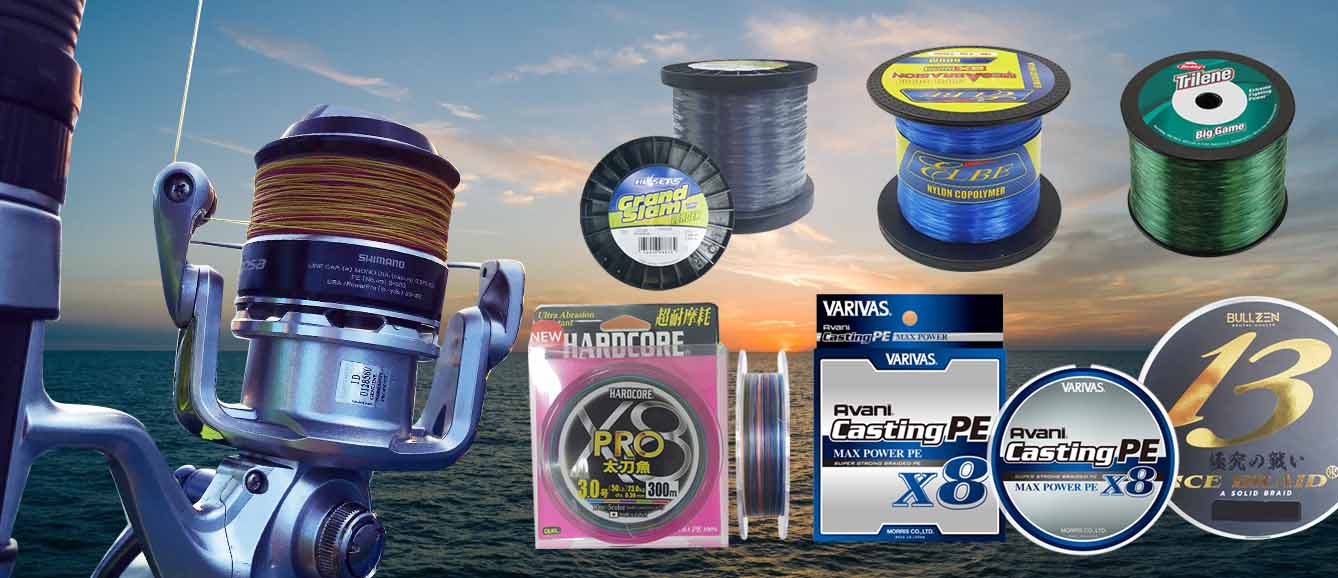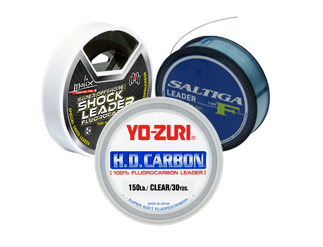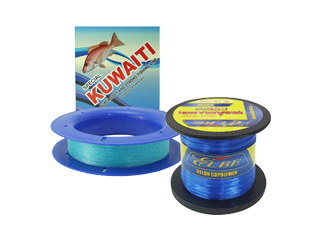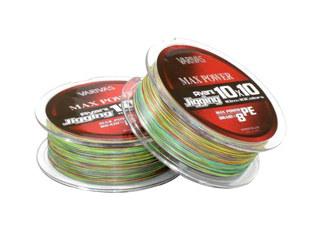My Accounts
Language

Hello!
Select your country
 United States
United States

Are you having trouble with choosing the right fishing line?
Many people think finding the correct fishing line is an easy job, as there are very few types of them available in the market. But keep in mind, there are plenty of variants, colours, brands, subcategories and hybrids. So, this apparently easy-to-do task is quite tricky in reality.
Don't get upset; this is a very common issue for new anglers, and this article is going to provide you with some expert opinion in this regard. By the end, you will acquire enough Knowledge to decide which fishing line is most suitable for your fishing style.
Types of fishing line
Fishing lines are divided into three main types based on 'when to use which. They are namely:
1. All about Monofilament Fishing Line:
Those colorless, single-fibered plastic lines we see everywhere are the monofilament lines. Monofilament, also known as 'mono', is the most common type of fishing line. Nowadays, monofilament lines are manufactured mostly because their fiber is very cheap and is produced in a range of diameters with various tensile strengths. You can find monofilament lines in many different colors or thicknesses as you want. This fishing line has become very popular all over the world for its application versatility.
Shop Monofilament Fishing Line
It is the easiest type of fishing line to cast. This line comes off the spool effortlessly and does not tend to tangle as much as any other type of line. No doubt why this one is considered best for newbie anglers. So the basic pros of monofilament lines are- cheap in price, super easy to use, tangling or breakage does not occur very often.
Monofilament lines usually have more elasticity compared to other types of fishing lines. That quality makes a big difference in how your lure or bait will be applied to your targeted fish. So, this is an important thing to keep in mind whether you are into lure fishing or prefer to present a bait close to the surface. The monofilament fishing line stretches almost 15-30% more than other types, depending on which brand or breaking strain you are using. More stretch in line can provide you more support in dealing with heavy fishes, violent head shakes and other rough conditions, as well as keeping your fish hooked.
The extra stretchiness of monofilament lines can be very handy if you are a beginner in angling or trying to teach a youngster. This characteristic makes monofilament lines very forgiving if the angler is giving too much or too little pressure on a hooked fish.
Besides being cheap, easy to use, and blessed with great elasticity, this fishing line is generally very much abrasion resistant. That means if you are going to fish near rocks, piling or any other sort of heavy structure, it would be best to use a monofilament line as the mainline or at least as a leader. Because while dealing with a hooked fish swimming around an abrasive element, such abrasion resistance of your fishing line is very important. It is also useful to cast toothy fishes. It also can be a very good shock leader. A leader is a heavy extended line attached to the mainline to absorb massive stress.
As long as I have explained about monofilament lines, they seem great. But like all other great things on earth, this reel also has a few cons, which you must be acknowledged before purchasing.
This fishing line’s most irritating downside is that it starts degrading while exposed to heat or very bright sunlight. This makes the line less sustainable if you usually catch fish in tropical climates. Another remarkable con of the monofilament line is- this can possibly stretch out if you ever get too involved in a long and extended fight with a heavy fish. For these two reasons, if you want to stay on the safe side, I suggest you regularly keep some fresh monofilament lines on your spool before you go out for a fishing trip. This small precautionary step will save you from losing any big, hooked fish and will provide you with the best performance.
You might consider one other tiny problem with this line: sometimes it can get twisted while spooling onto a reel or when frequently retrieving a spinning bait as a lure, which may result in bad casting and tangles. This situation can be solved easily if you stay careful in spooling and ensure the reel roller is working properly. Just make sure the line is not twisting up while leaving the spool for the reel and flipping the spool so that it loads without getting twisted.
Monofilament lines are the best option available for beginners, and you can find them easily in any shop.
2. All about Braided Fishing Line
Braided fishing line is the newest addition to the fishing industry. Varivas, Daiwa, Sunline, Seaguar, Gosen, Duel, AFW are manufacturing this. Braided line has become super popular among pro anglers and is already making a great impact on the industry.
The most remarkable characteristic of a braided line is that it has a much smaller diameter than the same pound test of fluorocarbon or monofilament lines. A smaller diameter will allow you to put more line on the spool of your reel and such diameter is also very limp with zero memory. This added facility will provide you with better casting as well as better performance in many different circumstances.
Multiple fibres of high-tech fabrics like Spectra (made in America) are used to achieve the smaller diameter of the braided line. These Spectra or other similar fibres are ultra-thin and usually are woven together in 4, 8, 12 or maybe 16-strand configurations to make a strong braided line which is a lot thinner and far limber than any other kind of fishing line.
Though its lower diameter may result in less air or water resistance, such a thin, limp yet strong line is a very good choice as the mainline to cast further or fish in the deep sea. For example, you can effortlessly use a much lighter sinker with a 25lb braided main fishing line versus a 25lb monofilament one.
Another important thing to be noted is that the braided line does not stretch, which can be either good or bad for you, depending on what kind of fishing you are into. Lack of stretch means more sensitivity, which will allow you to feel a bite, sinker hitting bottom, lure action and more other attributes like that. On the other hand, while using this line, you have to be extra careful. It is necessary to loosen the drag or to use a lighter-action rod to adjust the lack of stretch.
As the braided line has a slim profile, it sinks faster than monofilament while under pressure, this quality makes it ideal for deep drop settings.
However, the worst downside or con this fishing line has is that its fibre can get damaged quite easily by hard structures like rock, a shark's rough skin, the bottom side of a boat and even by reef or pier. So, choosing a braided line is not a good idea if you are going to fish near any hard structures. Also, for new anglers, using such lines may seem tricky to handle.
Although the braided line is a bit expensive, it lasts longer than monofilament, so braided fishing lines win the race in the long run. Braided lines also provide better performance in most circumstances, and professionals prefer using them.
3- All about Fluorocarbon Leader Line
The third type of fishing line widely used is the fluorocarbon leader line, commonly known as 'fluro'. The main feature of this fishing line is that it is transparent enough to let the light pass through instead of reflecting. This unique characteristic makes it rarely visible to the fish, resulting in more catching of fish.
Shop Fluorocarbon Leader Lines
Many professional and experienced anglers use this type of line to tie the hook for its fewer visibility properties, especially while fishing in clear water. Fish don’t see the line and never get afraid to see a bait as they don’t know there is a line attached. A fluorocarbon leader is also often used as a leader between the rig and the main fishing line to make sure that fish cannot see the few feet of line hanging above the rig. When you want stealth, this line will come in handy.
Another notable quality of the fluorocarbon leader line is- it is highly abrasion-resistant. There is very little chance of it getting bitten by a fish or damaged by hard structures like rock, reef, or pier.
Fluorocarbon leader is pricey compared to mono as its manufacturing process is quite hard. But fluoro does not last long. It is usually used in conjunction with braided or monofilament lines, not as the main fishing line.
How to choose the most suitable one?
After all these discussions I have done above, you know enough about each line type. You know each of them's advantages/disadvantages, which one is best for what and more. So, now it is mostly up to you.
If you are new to this game, start with monofilament first and then gradually mix and match; these others. Always sticking to one is not a good choice.
Still, if you have any more concerns, always consult with other fishing experts.



